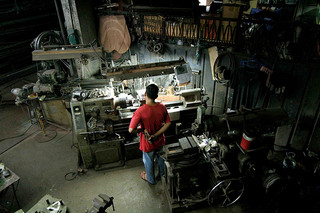Smartphones Squelch Market Demands for Several Key Consumer Electronics Supply Chains

In an uncertain world, there were still things people believed they could depend on. Some of these things included our need for consumer electronics like alarm clocks and home telephones. However, the introduction of the smartphone to the market has uprooted a number of key supply chains, leaving once-thriving industries wondering what’s to come.
This article is for Premium Members only. Please login below to read the rest of this article.
Not a Premium Member yet? Become one today.
[login_form redirect=’https://www.procurementbulletin.com/smartphones-squelch-market-demands-for-several-key-consumer-electronics-supply-chains’]
[show_to accesslevel=’Premium Members’]
The main supply chains affected by the smartphone are, unsurprisingly, handheld GPS devices, still and video cameras, MP3 players, handheld gaming devices, alarm clocks, and landlines. While demands for capacitors, resistors, and inductors are up, the market isn’t friendly to consumer audio and video imaging components. How much has the smartphone disrupted these supply chains?
According to a recent report, sales of the handheld gaming device Nintendo DS fell from $31.18 million USD in 2009 to a mere $5.1 million USD in 2012. Sales for 2013 are on track to be even more disappointing. Sales of the Sony PSP has also suffered this fate.
In the world of handheld GPS devices, sales of the Tom Tom (or lack thereof) is a good indicator of the smartphone effect. Tom Tom enjoyed sales of 1,748 million euros in 2008, but sold just 1,057 million euros of product in 2012, with even fewer sales expected for 2013.
Digital still and video camera sales have fallen an estimated 30 percent as of this year, while Cisco’s discontinuation of their formerly popular flip phone in April 2011 is a direct result of the smartphone. The effects can even be seen within single companies, where the Apple iPod sales have fallen from 50.3 million units in 2010 down to 35.2 million units in 2012 as a direct result of the ever-popular iPhone.
Alarm clock sales dropped from $401 million in 2010 to $343 million in 2012. Consumers are also giving telephone equipment manufacturers and suppliers the boot. In 2004, only five percent of U.S. households did not have a landline, but by 2011 this number had increased to 32 percent and rising.
Other supply chains that could see profits fall due to the smartphone include remote controls, auto stereos, and small television sets. [/show_to]








